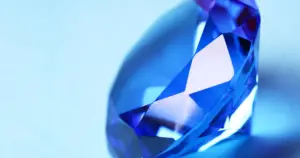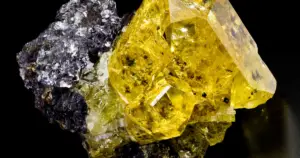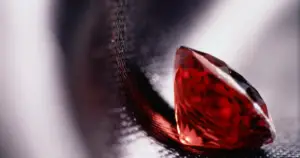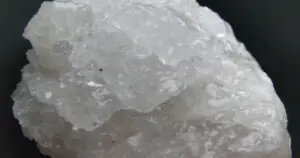Millerite Meaning: Healing Properties, Benefits and Uses
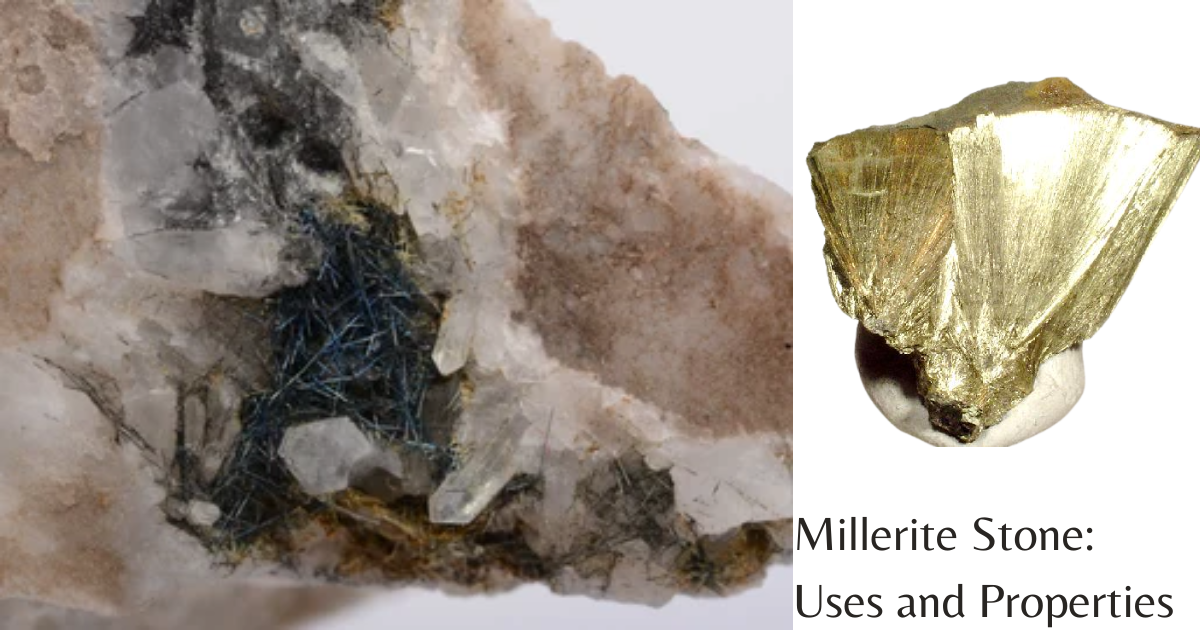
Millerite is also known as “Capillary Pyrite” because of its resemblance with pyrite in colour and it forms distinctive capillary crystals. It also has a brassy yellow hue. The mineral millerite may be incredibly beautiful and intriguing when it is discovered as brassy sprays inside of transparent quartz geodes that are shimmering with light.

Table of Contents
What is Millerite?
Within the geodes, millerite typically appears as splays or radiating masses of needle-like crystals that are typically golden or brass in colour and iridescent. It could contain pseudomorphs like honessite or jamborite, a hydrous nickel sulphide that can be yellow or greenish in colour. Millerite stone has a very low hardness range which is 3-3.5 on the Mohs scale of hardness.
Millerite is typically associated with the iron and copper sulphides pyrite, chalcopyrite, and bornite. The millerite crystals sometimes penetrate or cross the pyrite cubes, creating a beautiful display of mineral shapes. It is one of the few sulphide minerals that produce thin acicular crystals that resemble sprays of hair. Its hue is brassy, and it commonly forms radiating masses and hairy aggregates due to its acicular nature.
The crystal faces of pyrite and chalcopyrite can occasionally acquire a green or blue colour when copper is prevalent. The distorted development pattern in the symmetry of the long, thin crystals of millerite may also reflect the impact of stress during creation.
Millerite is a kind of nickel sulphide mineral or NiS. Its colour is brassy, and it commonly forms radiating masses and hairy aggregates due to its acicular nature. The crystal habit, duller colour, and typical absence of interaction with pyrite or pyrrhotite help to distinguish it from pentlandite.
How to Identify a Millerite?
Millerite has a deep, lovely yellow shade. Millerite is one of the rare sulphide minerals. As already mentioned, it produces thin acicular crystals that resemble sprays of hair-like threads. Millerite mainly forms in limestone and dolomite cavities and related geodes, as well as hydrothermal replacement deposits.
Two additional minerals that resemble millerite when they form acicular sprays of crystals are the oxide rutile and the silicate tourmaline elbaite. Typically found as radiating and jackstraw clusters of bright metallic acicular crystals, these crystals are a light brass-yellow colour with an iridescent gloss. However, millerites have a remarkable, almost organic aspect when they are sprays of ultra-thin capillary or filiform crystals.
– Millerite Cuts and Shapes
It is one of the few sulphide minerals that produce thin acicular crystals that resemble sprays of hair. Its hue is brassy, and it commonly forms radiating masses and hairy aggregates due to its acicular nature.
Where is Millerite Found?
Millerite is discovered in acicular (needle-like) crystals in quartz geodes near Halls Gap in Lincoln County. Despite the fact that millerite is found all over the world, these tiny geodes found in the Halls Gap region are the most famed.
In general, millerite is found as a substitute for metamorphosed pentlandite in the many ultramafic serpentinite bodies of the Yilgarn Craton in Western Australia and the Silver Swan nickel deposit in Western Australia.
The greatest places to find Millerite in Germany are the Friedrich Mine, Wissen, Siegerland (with its extraordinarily thick crystals), and Ramsbeck, North Rhine-Westphalia. Other locations across the world include the Glamorgan region in Wales, the United Kingdom; Kladno in Bohemia; the Perseverance Mine in Leinster, Leonora Shire; and the Pafuri Nickel Deposit in Limpopo Province; all of which are in Western Australia.
Millerite Stone Meaning and Ancient Lore and History
The English mineralogist Professor William Hallowes Miller, of the University of Cambridge, gave the nickel sulphide Millerite its name in 1845 when he first examined the crystals. It frequently forms huge, cleavable acicular crystals that are light brass-yellow to green-grey with an iridescent tarnish, as well as trigonal, metallic, tufts, radiating clusters, and spherules.
In the Welsh coal mines in 1845, Wilhelm Haidinger made the discovery of millerite. William Hallowes Miller was honoured with its naming. The mineral is relatively uncommon in specimen form, and the area around Halls Gap in Kentucky’s Lincoln County is where you may find it most frequently.
What are the Uses of Millerite?
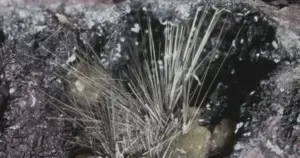
Because it has a larger proportion of nickel than pentlandite for its mass as a sulphide mineral, millerite is a highly significant resource of nickel when discovered in sufficient concentration. This indicates that it has more nickel percent of millerite than it does of pentlandite sulphide.
The Silver Swan, Wannaway, Cliffs, Honeymoon Well, Yakabindie, and Mt Keith (MKD5) orebodies all contain significant amounts of millerite as an important ore component. It is an ancillary mineral connected to New Caledonian nickel laterite deposits. Nickel is found in the mineral millerite. Since it is a rare mineral, fine crystals are highly prized by collectors.
Does Millerite make a good Jewelry stone?
Massive millerite is present in large quantities in some places, but gem collectors show little interest in it. It is inappropriate for wearing because of its extremely low hardness (between 3 and 3.5) and exquisite cleavage in both directions. Thus, it is rarely available on the market as a gem material for cabochons and ornamental items.
Millerite Real vs Fake
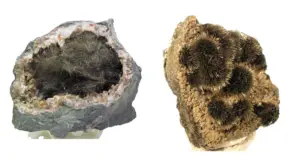
When seen normally in the air, Millerites exhibit extremely little pleochroism. However, this is more apparent in oil. They exhibit vivid yellow colour on the remarkable ray and a mild yellow-brown tint on the ordinary ray. Millerite leaves a stripe that is greenish black during the streak testing which confirms its genuinity.
Within serpentinite ultramafics, millerite is a frequent metamorphic mineral that has replaced pentlandite. The crystal habit, duller colour, and typical absence of interaction with pyrite or pyrrhotite help to distinguish it from pentlandite.
Summary of Millerite Crystal
| Name of Crystal | Millerite |
| Precious | No |
| Semi-Precious | Yes |
| Other Names | Capillary Pyrite |
| Origin(s) | Wales, United States |
| Color(s) | Brass Yellow, Bronze Yellow |
| Formation | Formed from Sulphur |
| Majorly Found at | Mexico, Germany, the UK, USA |
| Zodiac Suited for | — |
| Chakra | — |
| Crystal Meaning | Millerite does not have any spiritual significance |
| Types of Crystal | Trigonal |
| Healing Properties | Millerite is not a healing stone |
| Health Benefits | There are no health benefits of millerite since it is only a mineral compound nickel. |
| Uses | Millerite has industrial and lab uses since it is a nickel sulfide mineral. It does not have any jewelry uses. |
| Goes in Water? | Yes |
| Goes in Salt Water? | Yes |
| Goes in Rain Water? | Yes |
| Goes in Moon Water? | Yes |
| Moh’s Scale | 3 – 3.5 |
| Real | Millerite is a nickel sulfide mineral |
| Fake | No phoney samples |
FAQs
What is Millerite used for?
Millerite is a crucial resource for the metal nickel. As a result, in lab settings, researchers examine the extraction of nickel from this mineral using synthetic millerite. It is uncertain whether this synthetic material is used in jewellery.
How is Millerite formed?
In carbonate veins, such as those in Keokuk, Iowa, or as a byproduct of alteration of other nickel minerals, such as those in Andreas-Berg, Germany, one might find millerite, the nickel sulphide mineral. Other occurrences are in meteorites and as a byproduct of sublimation on Vesuvius.
